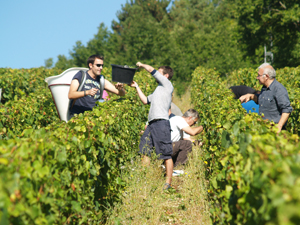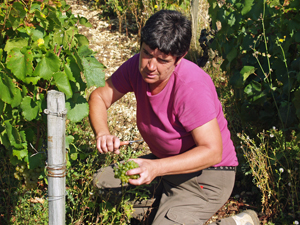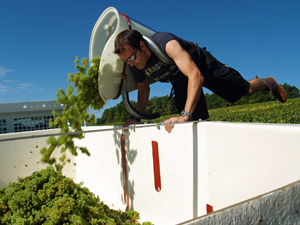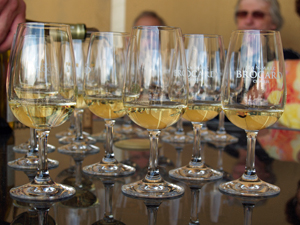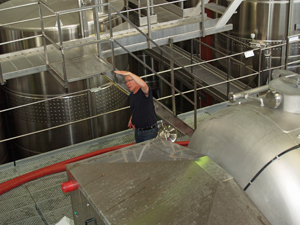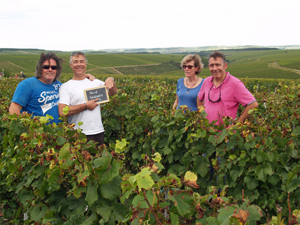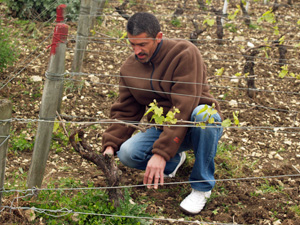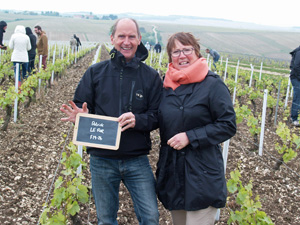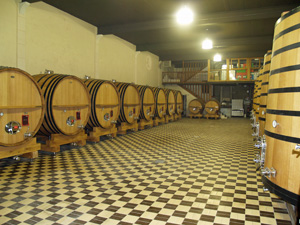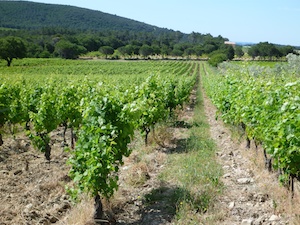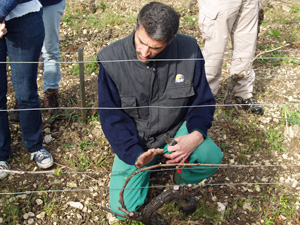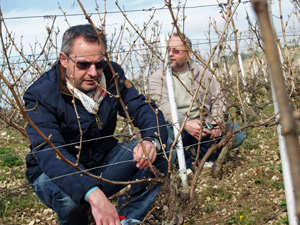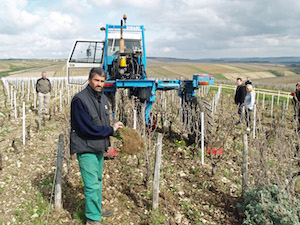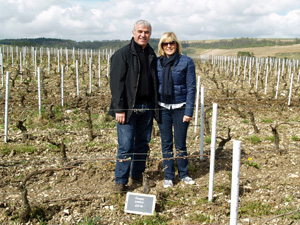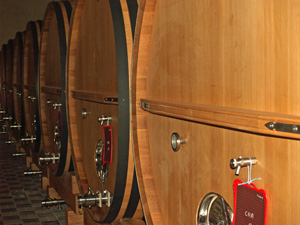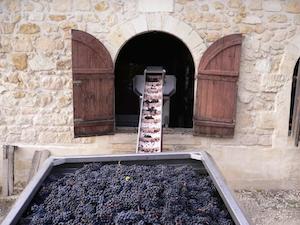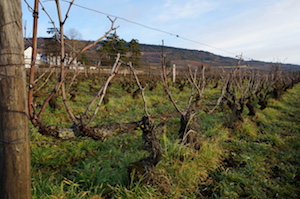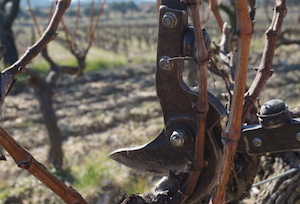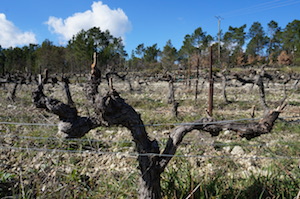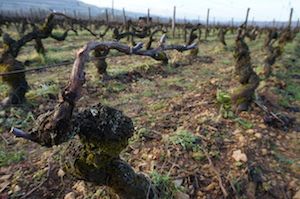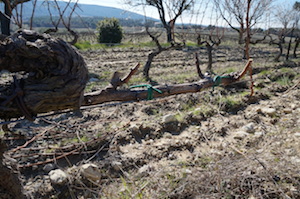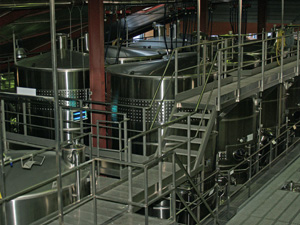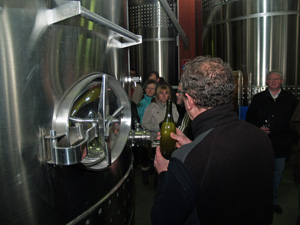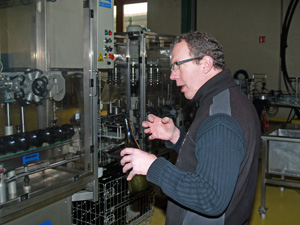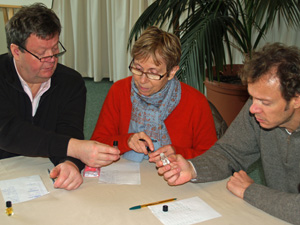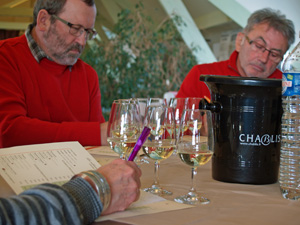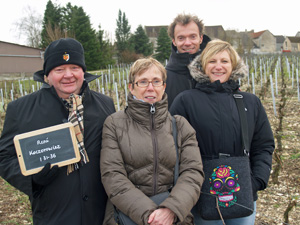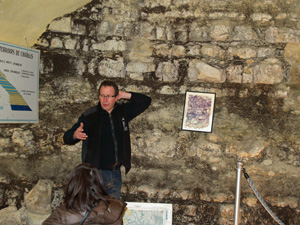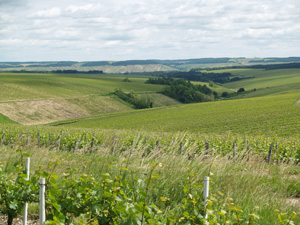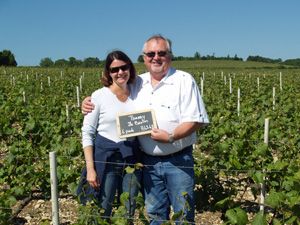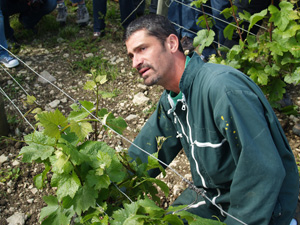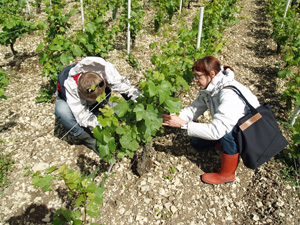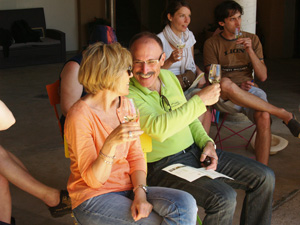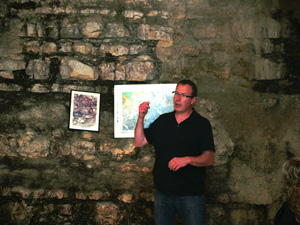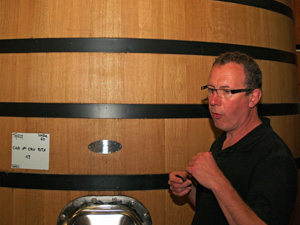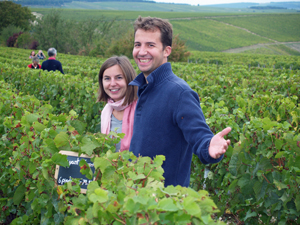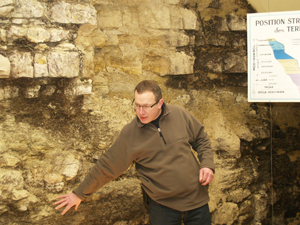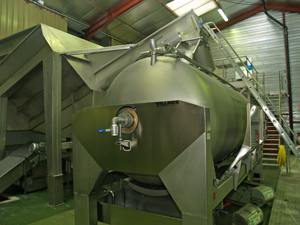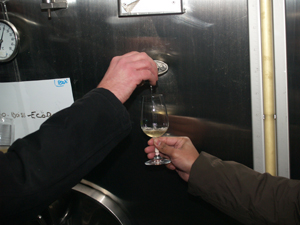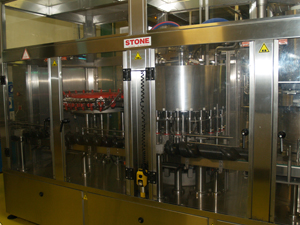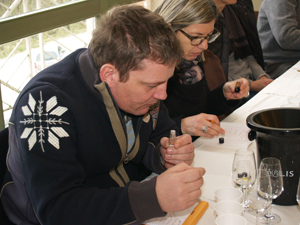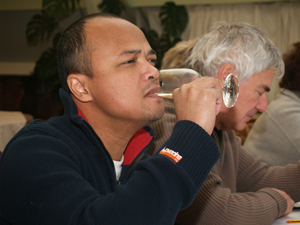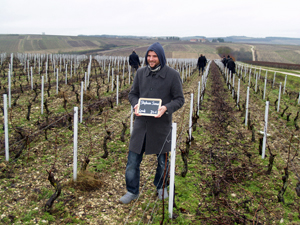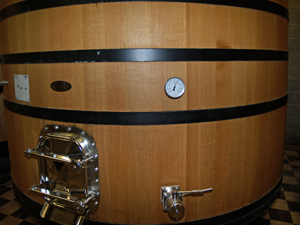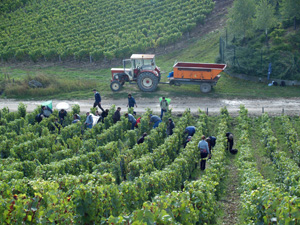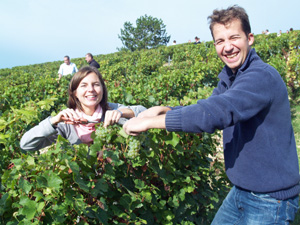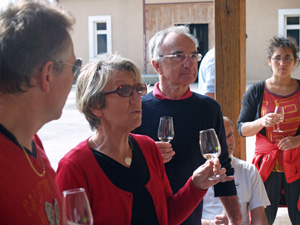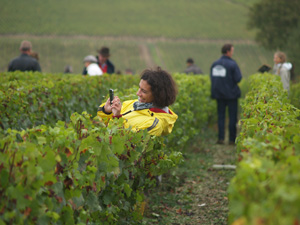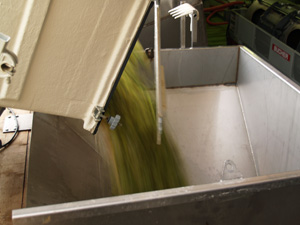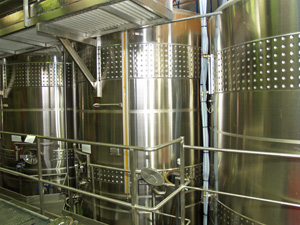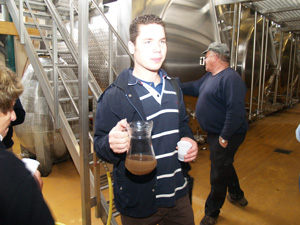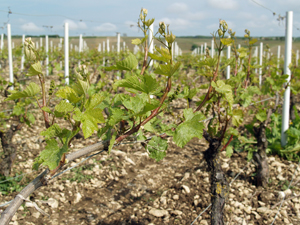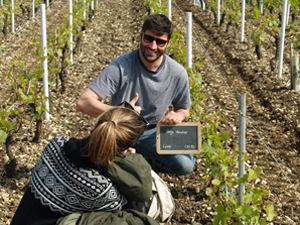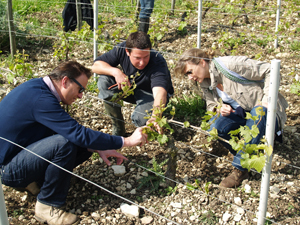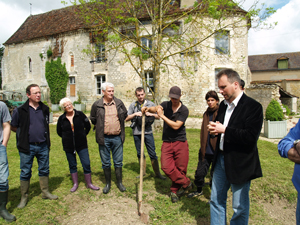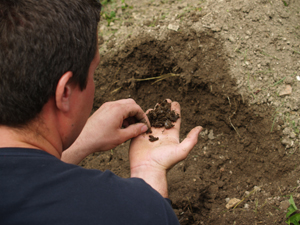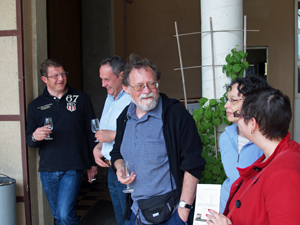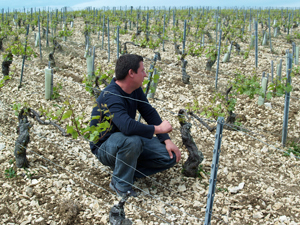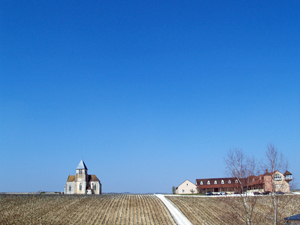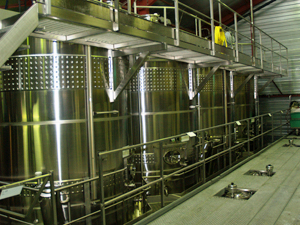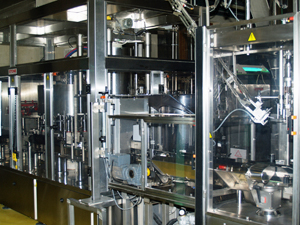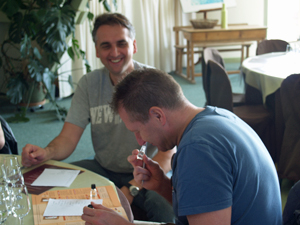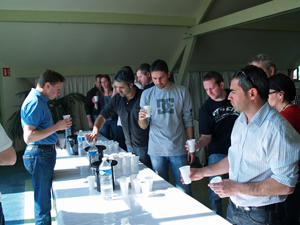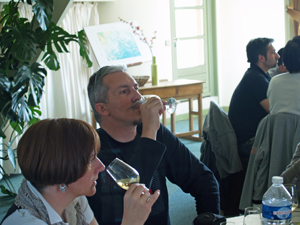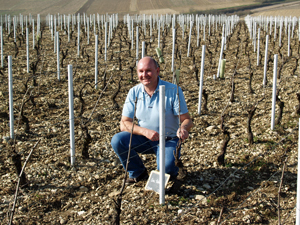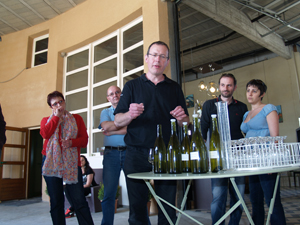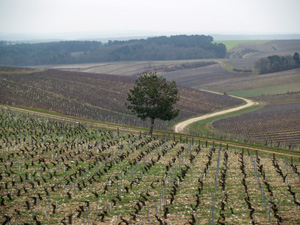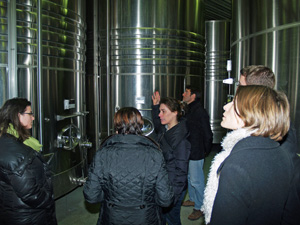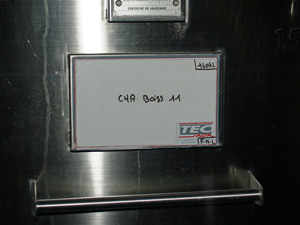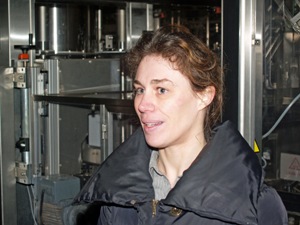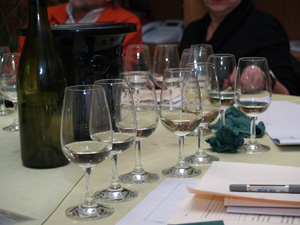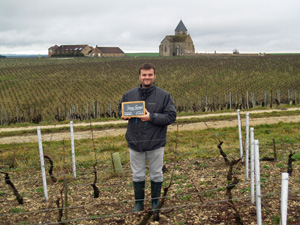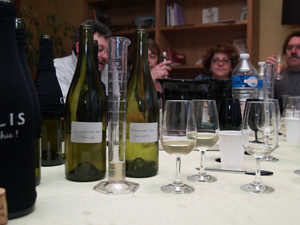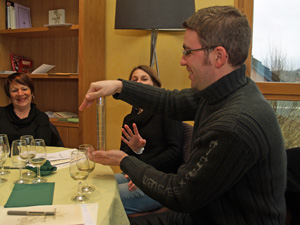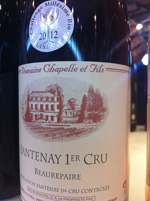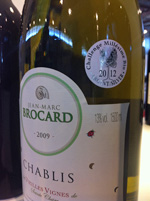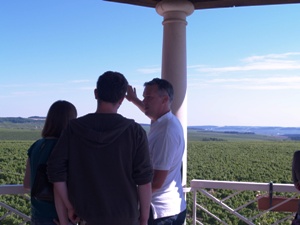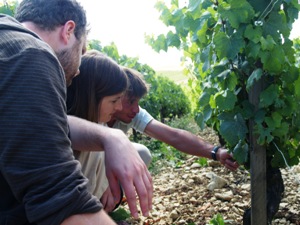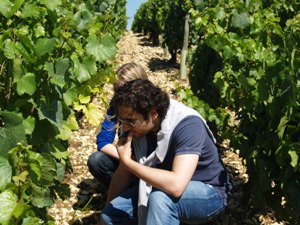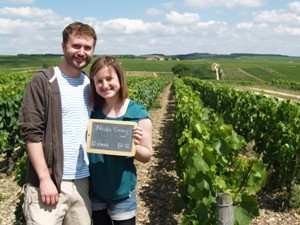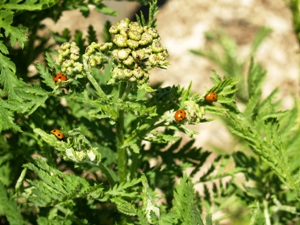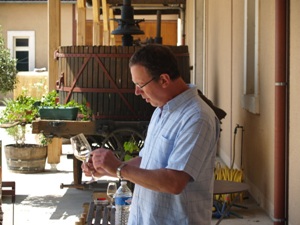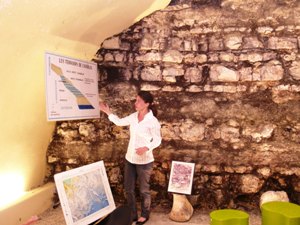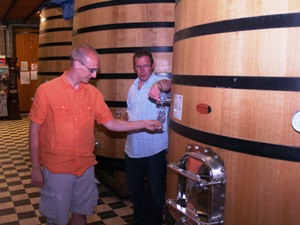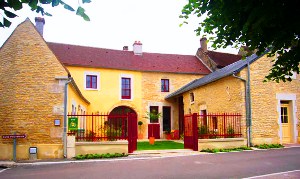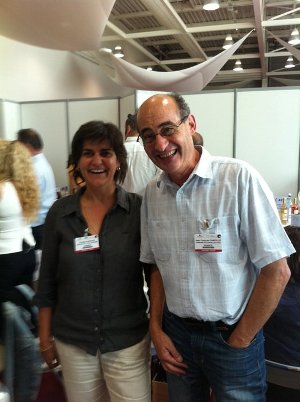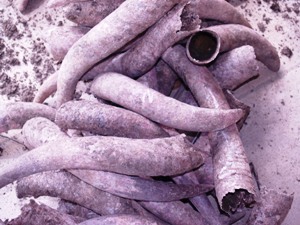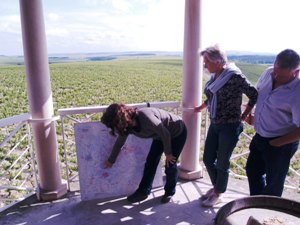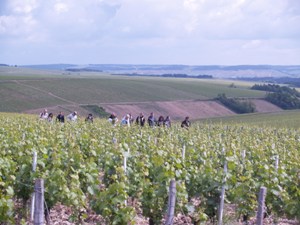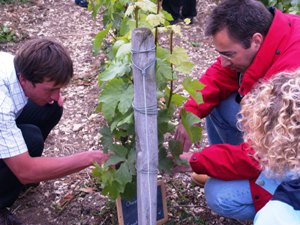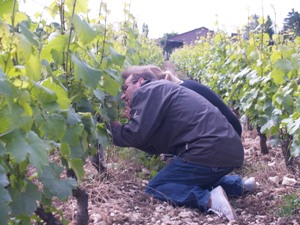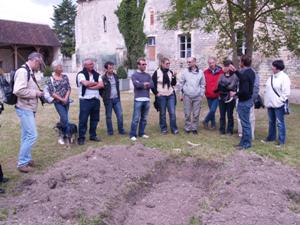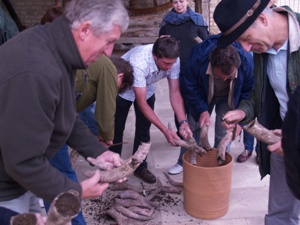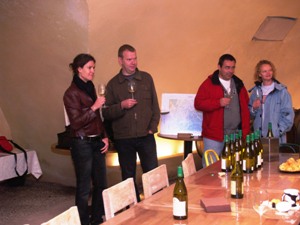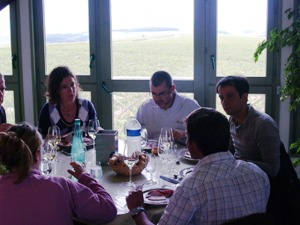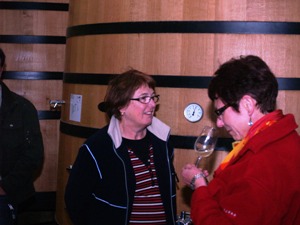Another weekend, another region and a new Harvest Experience
Day! This time we were at Domaine Jean-Marc Brocard in
Chablis with some of our Gourmet Odyssey Wine Experience clients
to harvest the Chardonnay grapes!
As soon as the clients had all safely arrived, we headed straight
into the vineyard to receive our orders from Frédéric Guegen, the
Vineyard Director. He split us into two teams of harvesters
and porters.
Armed with a pair of secateurs and a bucket, the harvesters
paired up to pick the grapes from both sides of the vine
rows. Paying particular attention to their fingers, the
harvest began!
The grapes at the winery hold much promise this year. They
have a good balance between sugar and acidity, and have grown in
abundance! At the end of the harvest, the yield should be
about 25% more than last year. The buckets were therefore
filling up quickly, and it didn't take long for the first cries
of "Porter" to resonate!
Each member of the porter team found themselves with a big basket
strapped to their back, their mission being to carry the bunches
of grapes to the trailer located at the edge of the
vineyard. As soon as the bucket is full, the harvesters
call for to the porters to come, and then empty the fruit into
the porter's basket. It's a physical job, especially as a
full basket can weigh up to 60kg. You often think that the
basket is full long before it actually is! With the rolling
landscape of Chablis, you also have the slopes to deal with!
Emptying the baskets is not as easy as it looks either,
especially the first time. You have to climb a ladder and
then let the grapes fall over your head. Some porters
almost followed the grapes in!
Working together, it's impressive how quickly the vines are
stripped of their fruit. It gave us more than enough to
work with afterwards though!
Back at the winery, the moment for the wine tasting came.
First up, a Petit Chablis 2010, followed by a Chablis "Domaine
Sainte Claire" 2009 which we then compared to a Chablis "Vielles
Vignes de Sainte Claire" 2009. We continued the tasting
with the wine from the adopted vines of Gourmet Odyssey
clients, "La Boissonneuse" 2009, before savouring a
few of the Chablis Premier Crus; a "Vau de Vey" 2009, a "Montée
de Tonnerre" 2009 and a "Vaulorent" 2008.
Overlooking the vines, we tucked into the Harvesters Meal!
The tasting continued with a few of the estate's Irancy red wines
and a few of the older Chablis vintages, served in magnums, such
as the Chablis "Vielles Vignes de Sainte Claire" 2001.
Each day was a little different. On Saturday, the winery
was in full action because the team of professional harvesters
was also working. This meant that the mechanic presses were
up and running. We rejoined our grapes that we had lovingly
harvested at the fermentation hall, to see them emptied from the
trailer into the press below. The press then buzzed into
life as it extracted and separated the juice from the skin, pips
and stalks.
Continuing the journey of our harvest, we ended up in front of
the tank where the fermentation will begin. Glass in hand,
we tasted the fruit of our labour, an oh so sweet grape
juice! We then had the chance to compare it to the juice
from another vat, where the alcoholic fermentation had already
begun for several days.
The estate's harvesters had been working in a pinot noir plot of
vines, located in the nearby Côte d"Auxerre. How the grapes
are treated and put into the fermentation tanks differs from the
chardonnay, so we were able to contrast the methods used for red
and white wines. Our first observation was the use of a
sorting table. We each took up position either side of the
table to sort the good from blemished or unripe
grapes. Then we watched as the grapes are stripped
from their stalks and then put into the tanks without any
pressing.
Sunday being a day of rest for the harvesters, the electric
presses weren't operating. That gave us the opportunity to
discover how the grapes were pressed in days gone by! The
estate still has a few old wooden pressing machines, and one of
the longer-serving members of staff, Jean-Bernard, helped us get
one of the legendary presses up and running!
Once filled, we put in place the wooden planks and the gearing
that would press the grapes. To work the press, we had to
move a long iron handle to and fro. Easy at first, but it
became more and more resistant as time wore on! You have to be
patient because if you go too quickly, the juice doesn't have
time to flow out.
Even if it takes much longer, the grape juice, tasted directly
from the press, was still as sweet and delicious as the day
before!
Many thanks to Céline, Frédéric and the team at Domaine Jean-Marc
Brocard for having welcomed us so warmly. We're longing to
taste the finished 2011 vintage!
